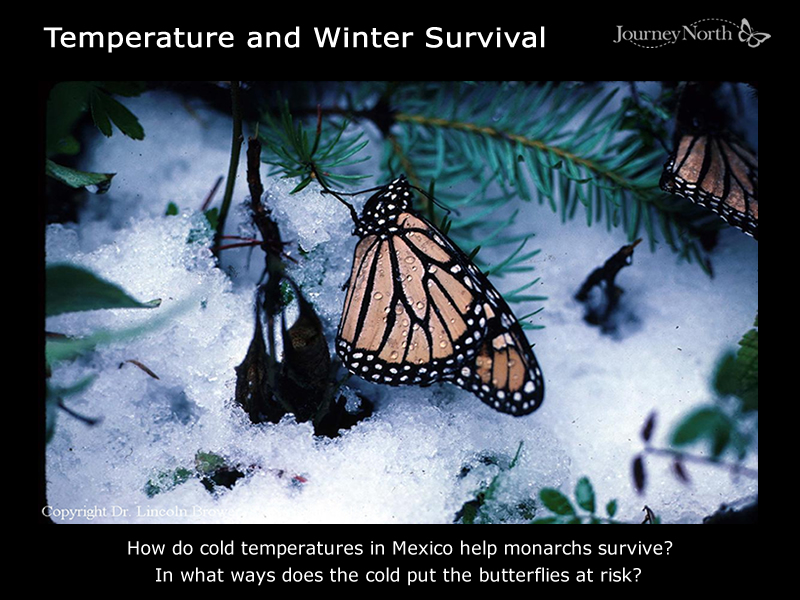By Elizabeth Howard
It's peak season in Mexico now. As temperatures rise, the butterflies break out of their clusters and fill the air.
|
Art Howard, ArtWorks |
It's mid-February now and temperatures at the overwintering sites are starting to rise. Monarchs have survived the coldest part of the winter season.
Conditions have been favorable this winter. Massive mortality from a severe winter storm has not occurred. Peak Tourist Season People in the region depend heavily on ecotourism during the brief peak season as Estela Romero describes.
|
|
|
 |
 |
 |
 |
| What to Report | First Adult report | map | list |
Milkweed report | map | list |
 |
 |
 |
| First Egg report | map | list |
First Larvae report | map | list |
Other Observations report | map | list |




